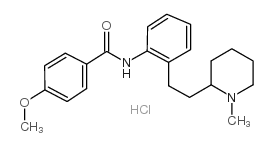Adherence and arrhythmic mortality in the cardiac arrhythmia suppression trial (CAST).
D Obias-Manno, E Friedmann, M M Brooks, S A Thomas, C Haakenson, M Morris, F Wimbush, C Somelofski, F Goldner
文献索引:Ann. Epidemiol. 6(2) , 93-101, (1996)
全文:HTML全文
摘要
Patient adherence to therapy is essential to assess treatment efficacy, particularly in clinical trials. Active treatment usually is expected to benefit patients. The healthy adherer effect, the association or greater adherence to all health-promoting behaviors, including medication and overall concern for health, explains the improved survival of more adherent patients in both active and placebo medication groups of several clinical trials. The Cardiac Arrhythmia Suppression Trial (CAST), a placebo-controlled double-blind clinical trial of post-myocardial infarction (MI) patients with asymptomatic ventricular arrhythmias, in which active medication (encainide or flecainide) led to increased mortality, provided an opportunity to examine the relationship of adherence to survival from a different perspective. We consider whether adherence to active treatment was related to arrhythmic mortality and whether a healthy adherer effect might counteract the effect of treatment on mortality among patients taking active medication. Adherence (average pill count) at the first follow-up visit did not differ in the active treatment (92.2%, standard deviation (SD) = 11.97, n = 574) and placebo (90.8%, SD = 13.66, n = 579) groups. In a Cox proportional hazard regression model, medication adherence predicted arrhythmic mortality among the active (P < 0.0062) but not the placebo medication group. The effect of adherence on arrhythmic mortality was significant beyond the effects of ejection fraction, race, spouse, smoking status, diuretic medication, and history of MI. A 10% increase in adherence led to more than a threefold increase of risk of arrhythmic death. The design of the CAST, which included a titration phase, may have tended to select relatively adherent patients since only those whose arrhythmias were suppressed with active medication were randomized into the trial. The data do not support a strong healthy adherer effect in the CAST. There was no evidence in this study that a healthy adherer effect counterbalanced the effect of the active medication.
相关化合物
| 结构式 | 名称/CAS号 | 分子式 | 全部文献 |
|---|---|---|---|
 |
恩舒尼盐酸盐
CAS:66794-74-9 |
C22H29ClN2O2 |
|
Encainide hydrochloride and flecainide acetate: two class 1c...
1987-11-01 [Clin. Pharm. 6(11) , 839-50, (1987)] |
|
ST segment elevation induced by class IC antiarrhythmic agen...
1998-11-01 [J. Cardiovasc. Electrophysiol. 9(11) , 1167-72, (1998)] |
|
Developmental electrophysiology of encainide and its major m...
1994-01-01 [Biol. Neonate 66(6) , 330-8, (1994)] |
|
Antifibrillary action of class I-IV antiarrhythmic agents in...
1995-07-01 [J. Cardiovasc. Pharmacol. 26(1) , 132-6, (1995)] |
|
Impact of the Food and Drug Administration approval of fleca...
1997-01-01 [Am. J. Cardiol. 79(1) , 43-7, (1997)] |